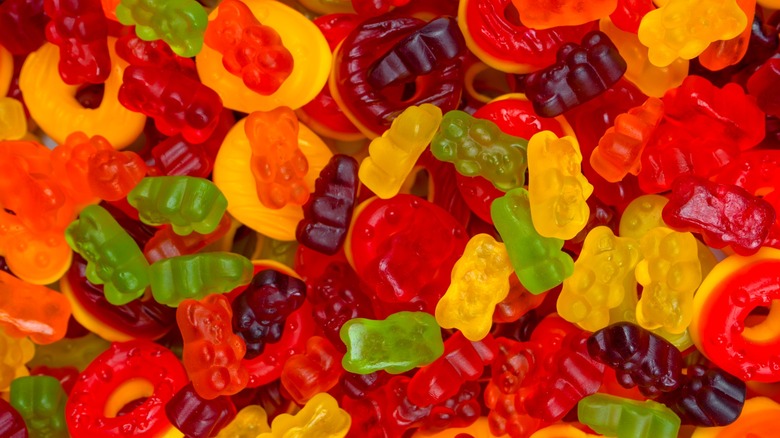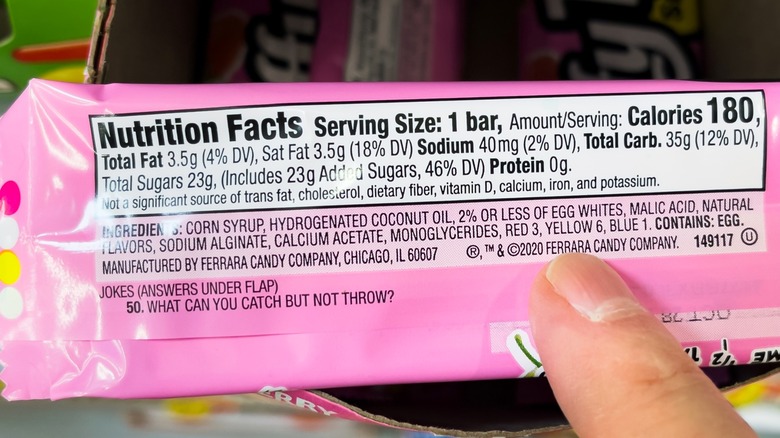What's The Difference Between Red Dye No. 3 And Red Dye No. 40?
With the FDA's ban on food and beverages containing red dye No. 3 set to go into effect starting in 2027, some folks have begun to scrutinize a variety of other color additives that could potentially be harmful. Many color enhancers are already forbidden in certain countries because of claims that they can cause negative health effects, but one in particular has recently caught peoples' attention: red dye No. 40. In 2024, California even passed legislation that banned red dye No. 40 from school food. Those moves have many asking what the difference is between red dye No. 3 and red dye No. 40.
You may see a product with red dye No. 3 in its list of ingredients, but you might see the same chemical tallied as erythrosine. Similarly, if red dye No. 40 isn't on the list, it might be seen under its alternate label — Allura Red. Erythrosine is lighter in color and produces a cherry-like hue, whereas Allura Red is noticeably darker. Both are derived from petroleum, but they are used in various commodities to create different shades of crimson.
What foods use red dye 3 vs red dye 40
It may be hard to avoid all red dyes because they can be found in so many different products. From candy to cough medicine, these color additives are around seemingly every corner in the grocery store. Red dye No. 3 is present in popular frostings, candies, and cookies, just to name a few examples. Even if you try eliminating sweets from your diet, erythrosine sneakily shows up in foods like meal replacement bars.
Some of the discontinued snacks you loved in the '90s might have contained red dye No. 3, but these days, red dye No. 40 reigns supreme. For years now, companies have been replacing red dye 3 with red dye 40, opting for Allura Red in products such as Skittles, Fruit Loops, and Frosted Strawberry Pop-Tarts — part of the reason Pop-Tarts are banned in so many countries. Beverages like Hawaiian Punch and Gatorade also often have red 40. Red dye No. 3 will soon be phased out, but the darker red dye No. 40 may remain step in to take its place. However, while red dye No. 40 has been deemed of low concern by groups like the Environmental Protection Agency and the World Health Organization, some sources indicate it may be rarely linked to allergic reactions, migraine, and behavioral disorders in children (via Healthline).

